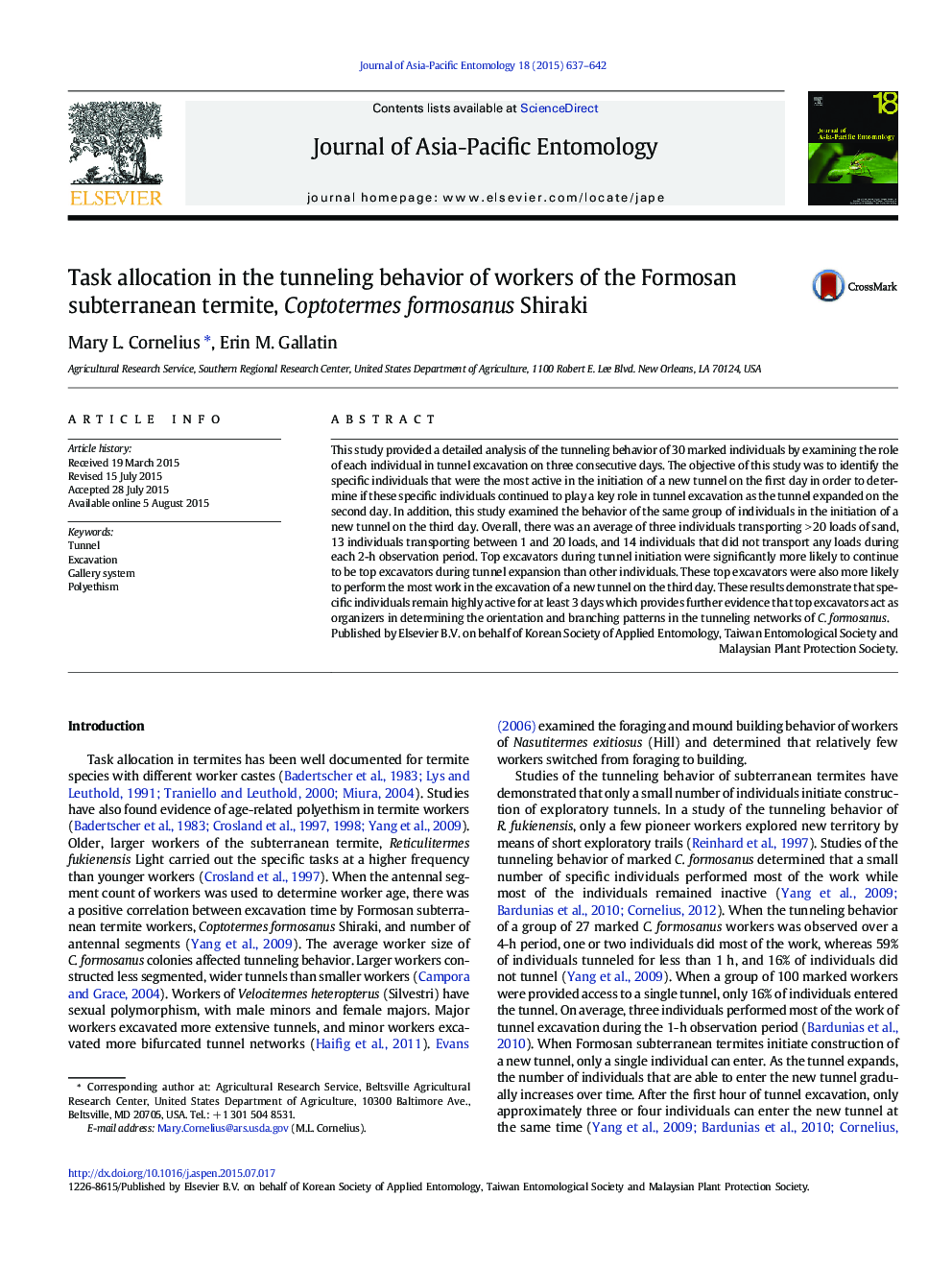| Article ID | Journal | Published Year | Pages | File Type |
|---|---|---|---|---|
| 4524385 | Journal of Asia-Pacific Entomology | 2015 | 6 Pages |
•A detailed analysis of the tunneling behavior of individual termites was conducted.•Specific individuals remained highly active excavators for at least 3 days.•Most individuals remained inactive as excavators over 3 days.•Top excavators may play a key role in determining the branching pattern of tunnels.
This study provided a detailed analysis of the tunneling behavior of 30 marked individuals by examining the role of each individual in tunnel excavation on three consecutive days. The objective of this study was to identify the specific individuals that were the most active in the initiation of a new tunnel on the first day in order to determine if these specific individuals continued to play a key role in tunnel excavation as the tunnel expanded on the second day. In addition, this study examined the behavior of the same group of individuals in the initiation of a new tunnel on the third day. Overall, there was an average of three individuals transporting > 20 loads of sand, 13 individuals transporting between 1 and 20 loads, and 14 individuals that did not transport any loads during each 2-h observation period. Top excavators during tunnel initiation were significantly more likely to continue to be top excavators during tunnel expansion than other individuals. These top excavators were also more likely to perform the most work in the excavation of a new tunnel on the third day. These results demonstrate that specific individuals remain highly active for at least 3 days which provides further evidence that top excavators act as organizers in determining the orientation and branching patterns in the tunneling networks of C. formosanus.
Graphical abstractFigure optionsDownload full-size imageDownload as PowerPoint slide
